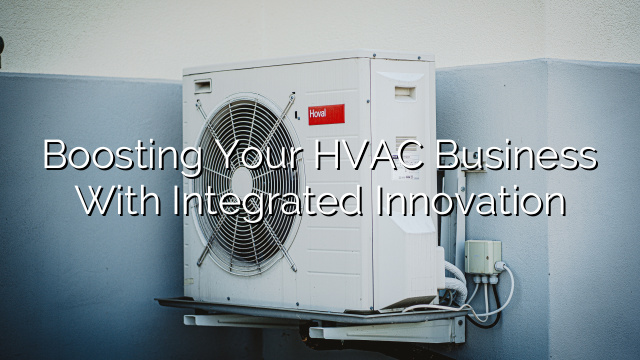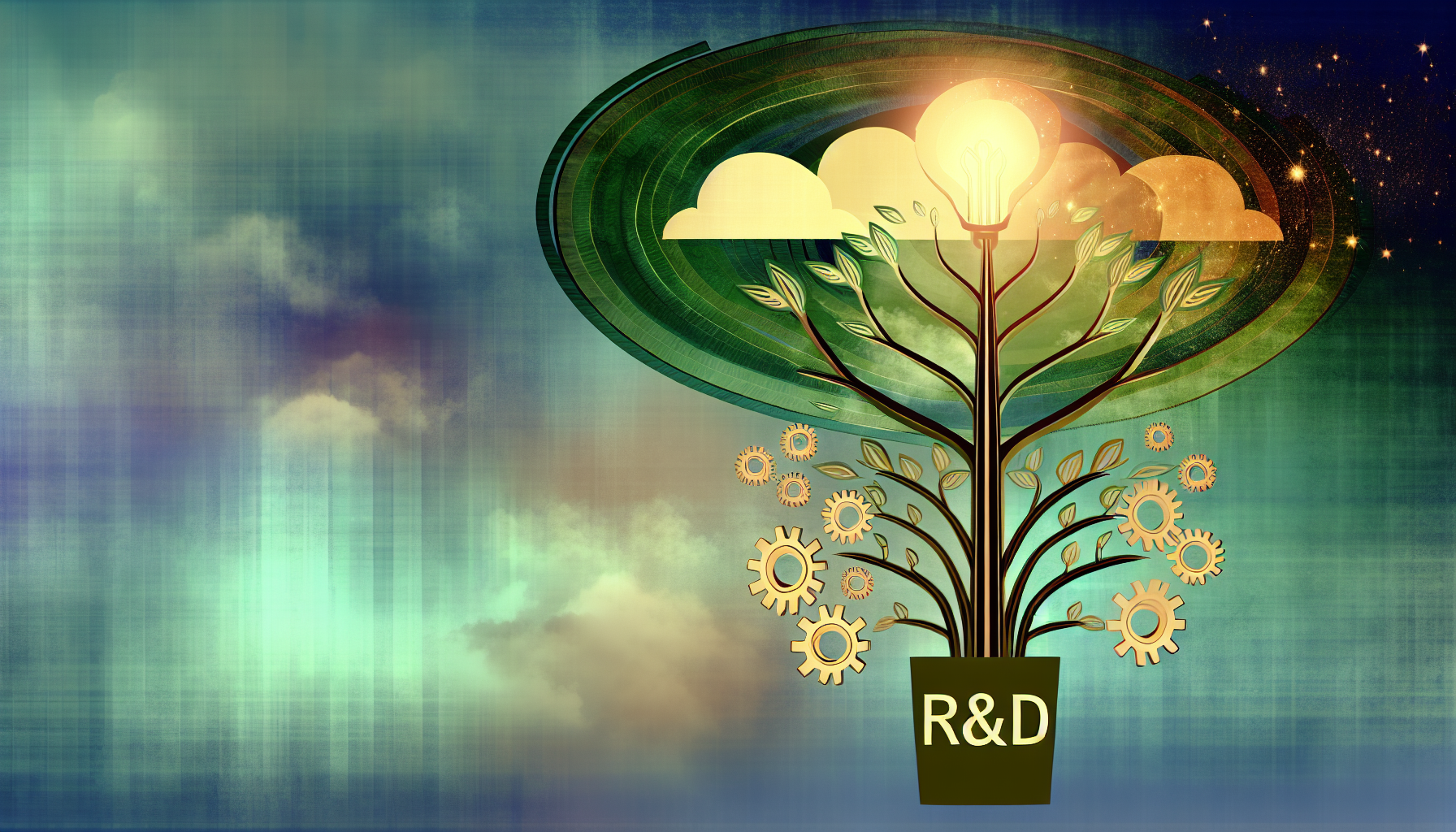Subheadings:
Introduction
The Importance of Green Technologies in the HVAC Industry
Enterprise Research and Development (R&D) in the HVAC Industry
Driving Forces Behind Green Technologies in HVAC R&D
Benefits of Green Technologies in HVAC
Challenges and Limitations of Green Technologies in HVAC
Future Trends in Green Technologies for HVAC
Conclusion
FAQs
Introduction
With increasing concerns about climate change and the need for sustainable development, the HVAC (Heating, Ventilation, and Air Conditioning) industry is turning towards green technologies to reduce its environmental impact. Enterprises investing in research and development (R&D) are playing a crucial role in driving the development and implementation of green technologies in the HVAC sector.
The Importance of Green Technologies in the HVAC Industry
The HVAC industry is a significant contributor to greenhouse gas emissions, energy consumption, and resource depletion. Traditional HVAC systems rely heavily on fossil fuels and tend to be energy-intensive, resulting in high carbon emissions. Green technologies in HVAC aim to address these issues by focusing on energy efficiency, renewable energy integration, and environmentally friendly refrigerants.
By adopting green technologies, the HVAC industry can significantly reduce its carbon footprint, conserve energy resources, and contribute to a cleaner and healthier environment. Green HVAC systems also offer economic benefits such as reduced energy costs and increased energy savings in the long run.
Enterprise Research and Development (R&D) in the HVAC Industry
Enterprise R&D plays a crucial role in the development and implementation of green technologies in the HVAC industry. Companies invest in R&D to drive innovation, improve existing technologies, and explore new solutions. R&D efforts contribute to creating more energy-efficient HVAC systems, enhancing system performance and reliability, and reducing environmental impacts.
Through R&D, enterprises can develop and test prototypes of new HVAC technologies, conduct performance evaluations, and gather real-world data to inform product improvements. This iterative process helps companies refine their green HVAC technologies and ensure their effectiveness and viability in the market.
Driving Forces Behind Green Technologies in HVAC R&D
Several factors are driving the development of green technologies in HVAC R&D:
- Environmental Regulations: Increasingly stringent environmental regulations and standards push the HVAC industry to reduce its carbon emissions, energy consumption, and reliance on harmful refrigerants. Enterprises investing in R&D can develop solutions that comply with these regulations and help the industry transition to greener practices.
- Consumer Demand: Growing awareness and demand for sustainable and energy-efficient products drive enterprises to invest in R&D for green HVAC technologies. Consumers are becoming more conscious of their environmental impact and are seeking HVAC systems that can help reduce their carbon footprint.
- Economic Incentives: Governments and utility companies offer various incentives and rebates to promote the adoption of green HVAC technologies. These incentives provide an additional motivation for enterprises to invest in R&D and develop innovative solutions that qualify for these programs.
- Technological Advancements: Advances in materials, sensors, controls, and data analytics are enabling the development of more advanced and efficient HVAC systems. Enterprises investing in R&D can leverage these technological advancements to design and optimize green HVAC technologies.
Benefits of Green Technologies in HVAC
The adoption of green technologies in HVAC offers several benefits:
- Energy Efficiency: Green HVAC systems are designed to be more energy-efficient, resulting in reduced energy consumption and lower utility bills. Improved insulation, advanced controls, and high-efficiency components contribute to energy savings and lower greenhouse gas emissions.
- Renewable Energy Integration: Green HVAC technologies can be integrated with renewable energy sources such as solar power and geothermal energy. This integration allows HVAC systems to use clean and sustainable energy, further reducing carbon emissions and dependence on fossil fuels.
- Environmental Sustainability: Green HVAC technologies prioritize the use of environmentally friendly refrigerants with low global warming potential (GWP) and zero ozone depletion potential (ODP). This helps protect the ozone layer and reduces the HVAC industry’s contribution to climate change.
- Improved Indoor Air Quality: Green HVAC systems focus on adequate ventilation, filtration, and humidity control to enhance indoor air quality. This is crucial for occupants’ health and well-being, as poor indoor air quality can lead to various respiratory problems and allergies.
- Long-Term Cost Savings: While green HVAC technologies may require higher upfront costs, they offer long-term cost savings through reduced energy consumption and lower maintenance requirements. The energy savings over the lifespan of these systems often offset the initial investment.
Challenges and Limitations of Green Technologies in HVAC
Despite the numerous benefits, green technologies in HVAC face certain challenges and limitations:
- Cost: Upfront costs for green HVAC technologies can be higher than traditional systems. This cost barrier may deter some consumers and businesses from adopting these technologies, especially in regions with limited incentives or financial support.
- Technical Complexity: Green HVAC technologies often involve complex systems, requiring specialized knowledge and skills for installation, operation, and maintenance. This may pose challenges for some HVAC professionals and require additional training and certification.
- Infrastructure Limitations: Integrating green HVAC systems with renewable energy sources may require retrofitting existing infrastructure or designing new buildings with renewable energy systems in mind. This can be challenging in areas with limited resources or outdated infrastructure.
- Market Acceptance: Building owners and consumers may be hesitant to invest in green HVAC technologies if they are unfamiliar with the benefits or uncertain about the technology’s reliability. Building trust and demonstrating the long-term value of these systems are crucial for market acceptance.
Future Trends in Green Technologies for HVAC
The future of green technologies in HVAC holds promising developments and trends:
- Smart HVAC Systems: The integration of smart technology, IoT (Internet of Things), and AI (Artificial Intelligence) will enable more advanced and autonomous HVAC systems. These systems can optimize energy consumption, adapt to user preferences, and provide real-time monitoring and diagnostics.
- Decentralized Energy Systems: Decentralized energy systems, such as microgrids and district heating/cooling, will continue to gain traction. Green HVAC technologies can integrate with these systems, leveraging localized renewable energy sources and reducing reliance on the grid.
- Advancements in Energy Storage: Improvements in energy storage technologies will enhance the integration of renewable energy sources with HVAC systems. Energy storage solutions, such as batteries, will enable greater flexibility in utilizing renewable energy and optimizing HVAC performance.
- Next-Generation Refrigerants: Ongoing research is focused on developing alternative refrigerants with lower GWP and improved efficiency compared to traditional refrigerants. The adoption of these next-generation refrigerants will further reduce the environmental impact of HVAC systems.
Conclusion
Enterprise research and development play a vital role in driving the development of green technologies in the HVAC industry. By investing in R&D, companies can develop innovative solutions that address environmental concerns, improve energy efficiency, and reduce the HVAC industry’s carbon footprint. The adoption of green technologies in HVAC offers numerous benefits, including energy savings, improved indoor air quality, and a cleaner environment. While challenges and limitations exist, ongoing advancements in technology and market acceptance hold the promise of a greener future for the HVAC industry.
FAQs
Q: Are green HVAC technologies more expensive than traditional systems?
A: Green HVAC technologies may have higher upfront costs, but they offer long-term cost savings through reduced energy consumption. The energy savings often offset the initial investment.
Q: Do green HVAC technologies require specialized installation and maintenance?
A: Green HVAC technologies can be more complex, requiring specialized knowledge and skills. HVAC professionals may need additional training and certification to effectively install, operate, and maintain these systems.
Q: Can green HVAC systems be integrated with renewable energy sources?
A: Yes, green HVAC technologies can be integrated with renewable energy sources such as solar power and geothermal energy. This integration allows HVAC systems to use clean and sustainable energy, further reducing carbon emissions.
Q: How do green HVAC technologies improve indoor air quality?
A: Green HVAC systems prioritize adequate ventilation, filtration, and humidity control, which enhances indoor air quality. This helps reduce allergens, pollutants, and respiratory problems associated with poor indoor air quality.







